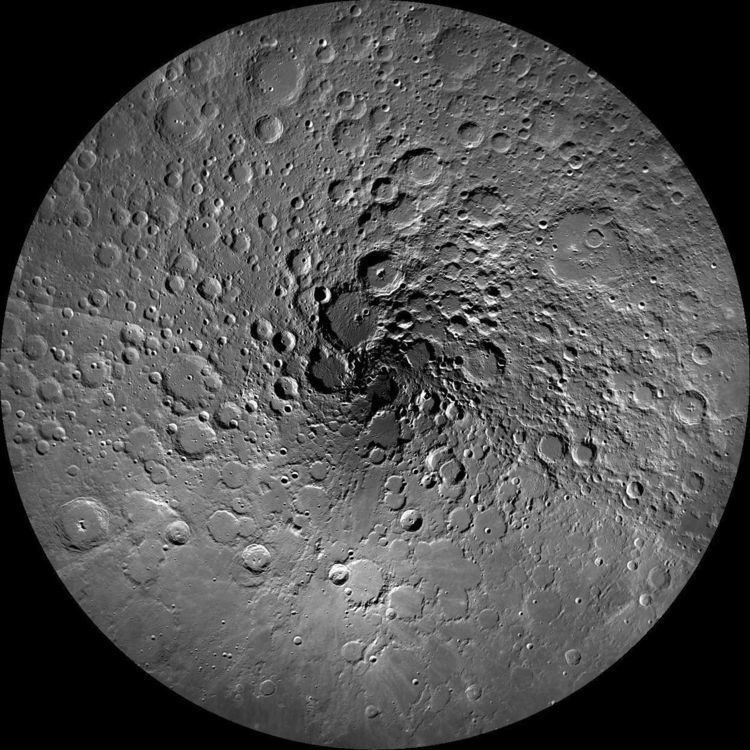Diameter 79 km Colongitude 25° at sunrise | Depth Unknown | |
 | ||
Peary is the closest large lunar impact crater to the lunar north pole. At this latitude the crater interior receives little sunlight, and portions of the southernmost region of the crater floor remains permanently cloaked in shadow. From the Earth the crater appears on the northern lunar limb, and is seen from the side.
Overview
The crater is nearly circular, with an outward bulge along the northeast rim. There is a gap in the southwestern rim, where it joins a slightly smaller worn crater Florey. The outer rim of Peary is worn and eroded, creating a rugged mountainous ring that produces long shadows across the crater floor.
The crater floor is relatively flat, but marked by several small craterlets, particularly in the southeastern half. The southern third of the interior remains cloaked in shadows, and so its features can be readily discerned only by means of ranging methods (for example, laser altimetry).
The worn and lava-flooded crater Byrd lies close to the southern rim of Peary. To the northwest, about a quarter the way around the lunar pole, is the larger crater Hermite. On the opposite side of the pole, on the far side of the Moon, lies the still-larger Rozhdestvenskiy.
In 2004, a team led by Dr. Ben Bussey of Johns Hopkins University using images taken by the Clementine mission determined that four mountainous regions on the rim of Peary appeared to remain illuminated for the entire lunar day. These unnamed "peaks of eternal light" are due to the Moon's extremely small axial tilt, which also gives rise to permanent shadow at the bottoms of many polar craters. No similar regions of eternal light exist at the less-mountainous south pole. Clementine's images were taken during the northern lunar hemisphere's summer season, and it remains unknown whether these four mountains are shaded at any point during their local winter season.
The northern rim of Peary is considered a likely site for a future Moon base due to this steady illumination, which would provide both a relatively stable temperature and an uninterrupted solar power supply. It is also near permanently shadowed areas that may contain some quantity of frozen water.
